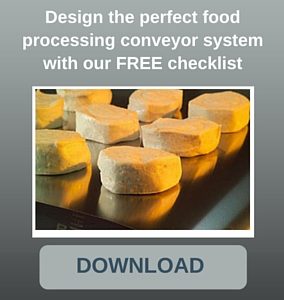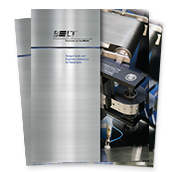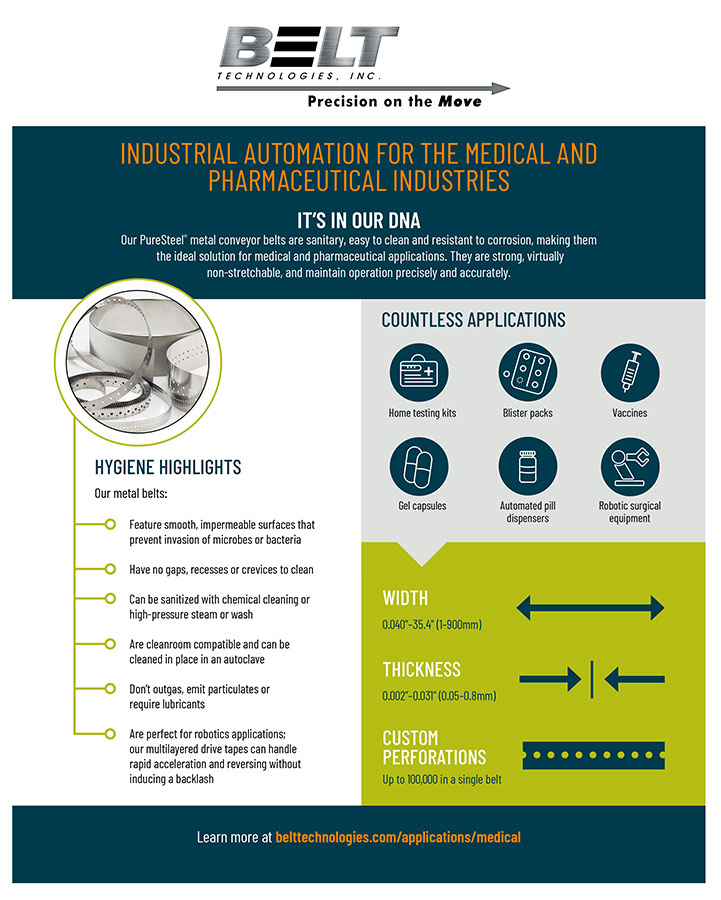 The diversity and complexity of the food processing industry can make designing the ideal food processing system overwhelming. Many factors—including the physical properties of the food being handled, the methods by which the food will be processed, and the sanitation methods used to prevent the spread of disease—will have an effect on system design.
The diversity and complexity of the food processing industry can make designing the ideal food processing system overwhelming. Many factors—including the physical properties of the food being handled, the methods by which the food will be processed, and the sanitation methods used to prevent the spread of disease—will have an effect on system design.
Belt Technologies, Inc. has an experienced team of engineers who are familiar with the diverse range of requirements for food processing conveyor systems. We have organized the key considerations for designing an automated food processing system into a simple checklist. The list has been designed to help facility managers and equipment-purchasing agents make informed decisions that will result in a system that provides maximum throughput without sacrificing quality or production time.
Consider the Specific Qualities of the Food Being Processed
The type of food being transported and its physical characteristics will strongly influence food processing conveyor system design. For example, food products that will be cut or diced on the belt require a solid surface that will not chip or scratch, which rules out rubber, plastic, and wire or mesh belts as viable material options. Other processes, such as the application of frosting to prepackaged cupcakes, require gentle handling and precise positioning to prepare. Belt Technologies can design stainless steel conveyor belts with custom attachments and timing pulleys to ensure accurate and repeatable product positioning.
Also consider how the food will need to be processed. Will it be cooked, cooled, frozen, or pasteurized on the conveyor belt? Some conveyor belt materials, such as rubber and plastic, have a low tolerance for extreme temperatures. They can warp over time or fracture if temperatures are too high or the transition between temperatures is too drastic. Stainless steel, however, is highly resistant to high and low temperatures and can easily transport food products through cooking and freezing processes.
Raw consumables, like meats, carry a high risk for bacterial contamination and therefore require special design considerations. Any belt carrying these products must be easy to sanitize to reliably prevent the spread of contaminants. Studies have shown that contagens, such as Salmonella, attach more easily to plastic and rubber than to stainless steel. Mesh metal belts may be made of stainless steel, but they also have thousands of grooves, linkages, and crevices where bacteria can hide ; this makes sanitation a challenge that can lead to costly production downtime. Solid stainless steel metal belts offer no safe haven for bacteria and are able to withstand cleaning methods that would corrode weaker belt materials.
Solid Metal Conveyor Belts Have Unique Qualities that Can Be Leveraged for Optimum Performance
Stainless steel metal belt conveyor systems offer a variety of benefits that make them a simple and obvious choice for food processing facilities. Stainless steel is a versatile metal that is highly resistant to corrosion and temperature extremes. Its high thermal conductivity gives stainless steel the ability to evenly transmit heat, which makes stainless steel conveyor belts a reliable choice for processes in which food is cooked on the belt itself. A variety of alloys are available that can maximize the belt’s ability to withstand extreme temperatures, if necessary.
Unlike plastic and rubber conveyor belts, stainless steel belts do not outgas, do not require lubrication, and do not generate particulates. This helps maintain the desired flavor of food products and greatly reduces the risk of contamination by foreign particles. Mesh metal belts may lose linkages or broken wire in the products; they also provide crevices in which bacteria and other particulates can collect.
Germs and bacteria do not have affinity for the smooth surface of stainless steel metal belts, making them more sanitary than other belt materials. Because they are able to withstand corrosive chemicals and high temperatures, stainless steel conveyor systems can be cleaned via a variety of cost-effective methods, including chemicals, high-pressure washing, and high-pressure steaming. Belt Technologies, Inc. designs metal conveyor systems that are easy to access and sanitize. This minimizes downtime and maximizes product throughput with minimal risk to product quality and safety.
Belt Technologies engineers will also ensure your food processing conveyor system will be designed to last. Our metal conveyor belts are built to minimize or eliminate reverse bends and ensure the maximum lifespan of the belt; this saves facility managers valuable time and labor on maintenance.
Environmental Conditions Can Affect Metal Conveyor System Design
The environment in which the system will be installed plays an important role in the design process as well. Food processing conveyors should be built so that surfaces can quickly and easily be exposed for cleaning, maintenance, and inspection. Whether the system is made to be cleaned in or out of place depends on the transport and processing needs of the food product as well as the area around the belt itself. Belt Technologies designs belts that consider both facility and function.
The size and shape of the space are not the only factors to keep in mind. Is the facility subject to controlled temperatures? Will the food preparation processes generate excess moisture that may collect in the system and cause corrosion? Are there any chemicals in use that need to be accounted for? We can assist in choosing the right food processing materials to suit your food processing needs.
Ensure Your Automated Food Processing Conveyor System Aligns with Current Quality Standards
Food processing is one of the most strictly monitored industries in terms of safety and quality. As part of the Food Safety Modernization Act (FSMA), the FDA recently released a set of updated food processing standards designed to prevent contamination and the spread of disease in the food industry. These new regulations focus on the initial design of food processing systems as well as their adherence to cleanliness standards.
Stainless steel is inherently more sanitary than other conveyor belt material options, which makes adherence to FDA standards much easier. The engineers at Belt Technologies will ensure that your food processing conveyor system complies with the strict specifications of the updated FSMA as well as the existing regulations put in place by the FDA.
Whether you are seeking an entirely new food processing conveyor system or to upgrade an existing system for increased safety and product quality, Belt Technologies is able to help. Our comprehensive checklist will allow you to review the factors that will have the most impact on the design of your automated food processing conveyor system.



